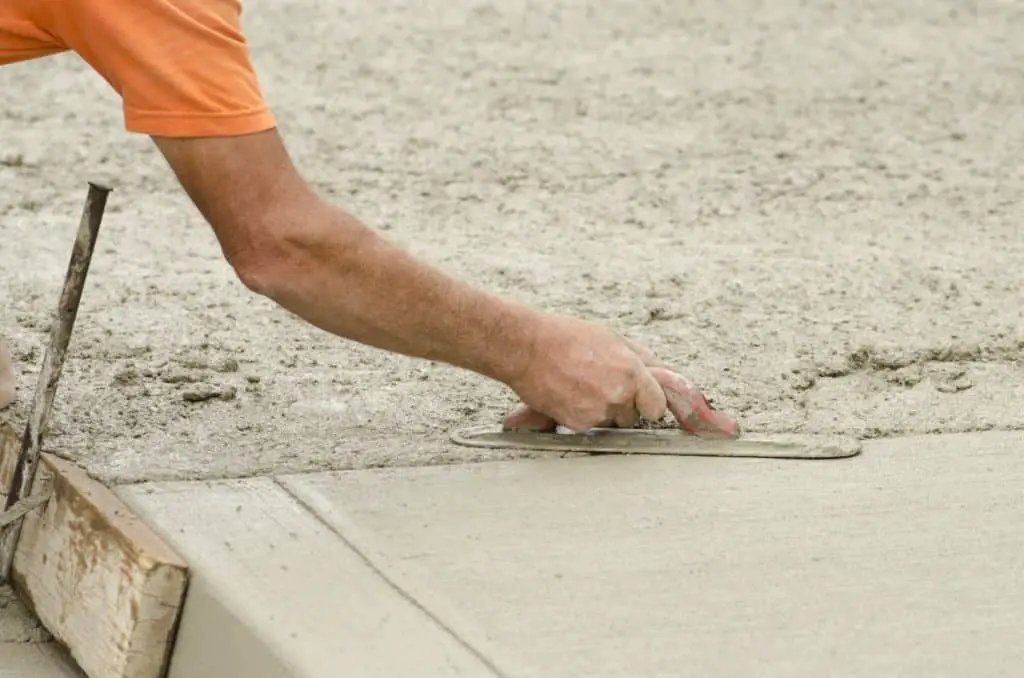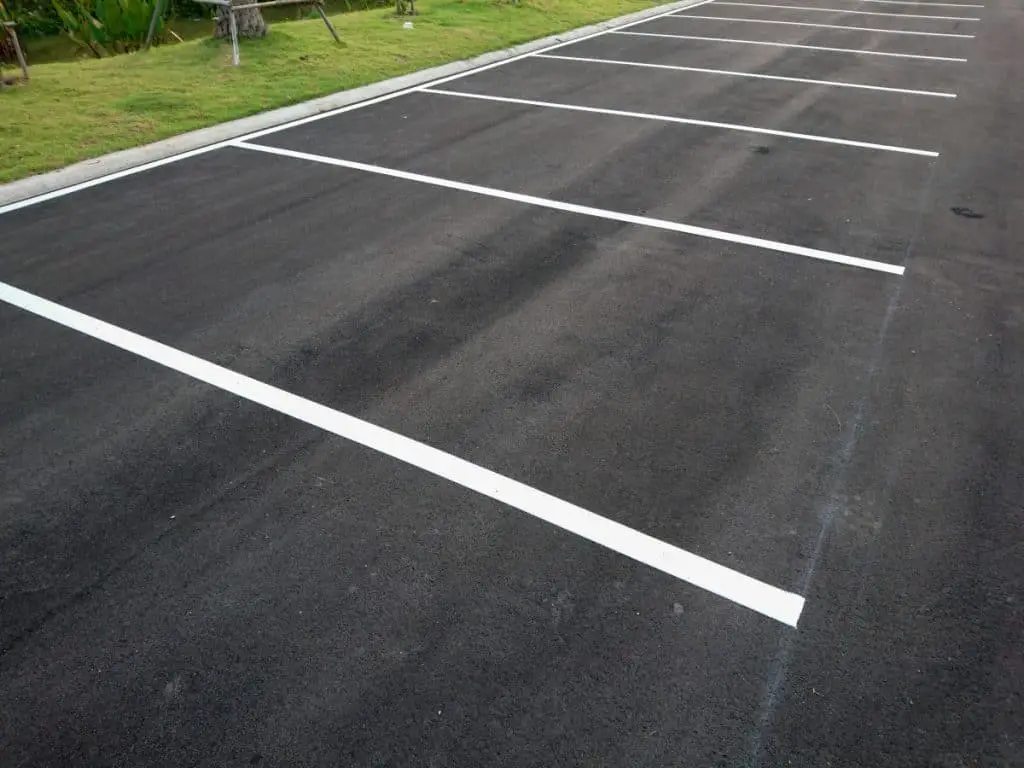Scooters, bikes, skateboards, or even rollerblades all glide along smooth concrete sidewalks. Sidewalks chart paths all over the world that connect society together, and while it does take a lot of concrete you would be surprised to see the attributes and thickness that make up such a well-used path.
The best thickness for concrete sidewalks is 4 inches for walkways and 6 inches if cars will be driving across it, such as a sidewalk in front of a driveway. A sidewalk must be thick enough to bear the projected load. A sidewalk that is too thin can crack and erode under pressure.
When building or making walkways, concrete has become incredibly popular. This is probably due to the fact that concrete is a very durable building material with many advantages. But, the correct thickness is vital when pouring a concrete sidewalk. Learn more about why in this article.

Table of Contents
What Happens if a Sidewalk is Poured Too Thin or Too Thick?
It seems there is a toss-up in the concrete world between the cost and the durability of concrete. As previously stated, concrete must be 4 inches thick for a sidewalk, but what happens if it is not that thick? Or what if it far exceeds those 4 inches? One can only imagine the results of thin concrete.
Thinner concrete changes with the surrounding temperature much more quickly than thicker concrete does. The results would be cracking under too much pressure and deteriorating much more quickly.
Thicker concrete doesn’t yield quite the bad results that thin concrete does.
Generally, the thicker you pour concrete, the stronger it gets. However, pouring a thicker concrete sidewalk is usually unnecessary and you would therefore be wasting resources.
Even if the concrete gets stronger when poured thicker, it will cost you extra.
We wrote an article to give you an idea of how much a concrete sidewalk will cost. That might be good to read before you decide.
Yet another aspect to consider is consistency. Imagine a sidewalk that was falling apart in some places, and bulging in others. It doesn’t seem to please the eye. When pouring concrete, it is important to make sure that it is even.
The only difference between the line of flattened earth and soil and the line of concrete should be the thickness of it. Sidewalks follow the level of the earth.
Below is a little more about the subgrade, or base layer.
The Base Adds to the Total Thickness (under ground)
Laying siding can also be tricky as you consider the foundation where your sidewalk will sit.
Usually, before the concrete ever makes its way into the process, a base of gravel is laid.
The base is usually four to eight inches thick and must be even and packed down before you begin pouring.
This is of course poured in under ground, so the layer of gravel doesn’t add to the visible height of the actual sidewalk.
Another important point to consider as you lay concrete is to never lay the mixture directly onto grass or sod. The reason for this is that organic material can decay which may cause movement to the concrete slab and increase the risk for cracks.
Also Read: Best Concrete Mix for Sidewalks: What the pros use
Do Concrete Sidewalks Need to Be Reinforced With Rebar?
Additional reinforcement can be made to improve the life, appearance, and durability of your concrete. But do you really need to reinforce a concrete sidewalk?
Most sidewalks do not require to be reinforced with rebar. An ordinary sidebar simply doesn’t need the extra support given through reinforcing it. However, a wire mesh can be helpful in holding the sidewalk together when it does crack.
One way of controlling the cracks and making the sidewalk last longer is to use contraction joints. They are the reason sidewalks have lines in them.
At one point, we each see a sidewalk that is not only cracked but jetting into the air at every crack and creating the perfect place to trip and fall. This happens over periods of time if the concrete is not reinforced.
If you do want to reinforce any concrete, you can use rebar, wire mesh, or steel.
For only 4 inches of concrete, which most sidewalks will have, wire mesh is suggested. You can do this by first laying down slab runners in order to hold your mesh off your base, positioning it in the middle of your concrete’s thickness.
But, as stated, a concrete sidewalk of regular thickness does not need to be reinforced.
However, if you consider pouring a thicker slab than the standard 4 inches, you might have to ask a professional contractor about your specific situation.
Related Article: What Concrete Requires No Reinforcement?
When Do Sidewalks Need to Be Extra Thick?
By taking into account the weight of the load each slab of concrete must bear will help in determining how thick your concrete needs to be.
Four inches for a normal, standard sidewalk, or for a small driveway that will only hold small vehicles. In essence, the more the weight the thicker it should become.
If a sidewalk crosses a driveway or other space where larger vehicles will be crossing, it is suggested to increase the thickness of your concrete to six or eight inches.
Below are some other examples that may help put into perspective the thickness you need:
- Parking lots are generally 6 inches thick.
- Loading docks or dumpsters pads may be as thick as 12 inches.
- Commercial driveways are normally 8 inches thick.
- Highways are standardized from 11 to 12 inches thick, but this can change dependent upon the amount of traffic.

Other Facts About Concrete Thickness to Keep In Mind
When it comes down to laying a sidewalk, and determining the thickness needed for walkways and other transportation pathways, much has to do with the earth and soil underneath, the temperatures it will be subject to, and the weight your planning to have upon it.
Here are some short facts that might also be helpful.
- If the concrete slab is too thin, it will collapse. If the slab is too thick, it’s a waste of money and resources.
- Adding even 1 more inch to your 4-inch sidewalk can increase the load-bearing capacity by nearly 50 percent.
- While your thickness should be uniform, slanting the sidewalk ever so slightly away from a nearby home or building will allow drainage not to build up around it.
- Driveways typically hold 1,800 psi to 4,000 psi (pounds per square inch).
- Additional strength can be found in concrete by using a stronger cement powder.



